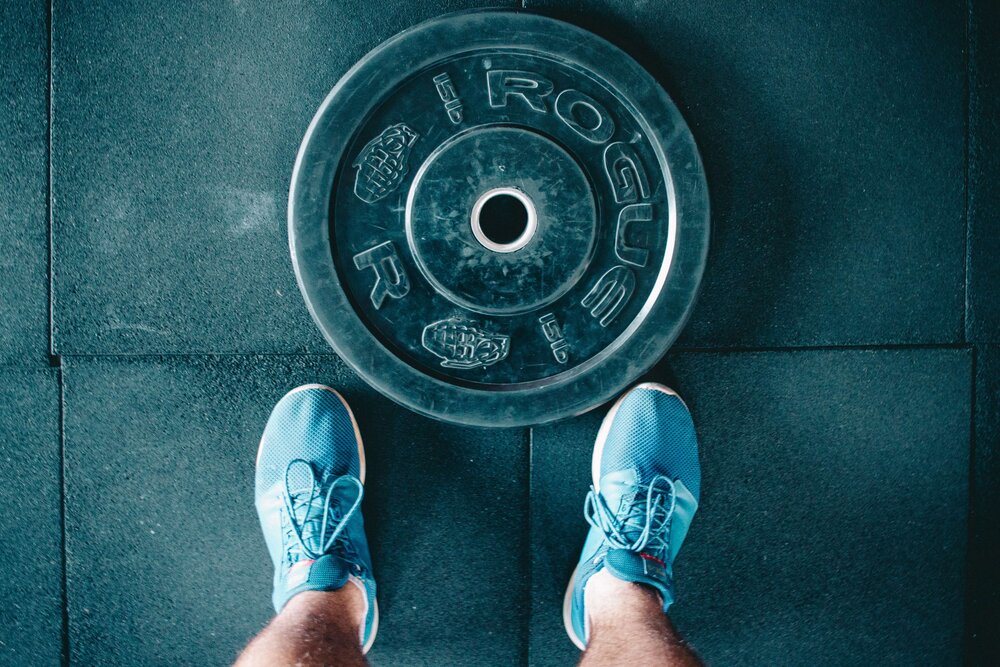Why improving your mobility will help prevent injuries (+ easy warm up routine)

You’re working out regularly and feel fit and healthy, but how would you rate your mobility? Fitness is about more than just how much you can deadlift or how fast you can run a mile. But full-body mobility and range of motion are often overlooked in favour of the more exciting fitness pursuits like heavier lifts and more reps.
In this post, we’ll explain why mobility and a controlled range of motion are so crucial to your health and injury prevention. Plus, we’re sharing some warm-up stretches you can add to your day or workout warm-ups to keep your body moving well.
What is mobility (and why is it so important)?
We’ve all heard of mobility, but what exactly is it, and why will it help prevent injuries? I consider mobility to be your body’s ability to move through, remain stable and control your available ranges of motion.
But the term itself has become a vague, catch-all label. Most often, ‘mobility’ actually refers to your range of motion.
True mobility requires strength, control, coordination, flexibility and many other factors. To assess this, we look at your capacity and ability.
For example, we use passive movement and flexibility assessments to see the range of motion your joints are capable of when no forces are acting on your body. That’s your ‘capacity’.
How well you can perform that action and how well you can move through that range with forces acting on your body is what we consider your ‘ability’.
These components are crucial to our treatment and performance improvement plans because there’s no point in giving you deep squats and lunges for the hips and the knees if we know that the joint is incapable of moving the way it needs to. That’s just setting you up to fail.
Once we know your individual capacity, can we recommend exercises to strengthen and re-educate your brain’s movement patterns.
Range of motion is all relative
Another element of our in-clinic mobility assessment involves looking at the context of the actions because the mobility you need is relative to your exercise regimen and lifestyle.
Let’s take the ankle, for example, and the necessary mobility for a powerlifter compared to a sprinter. Both activities require a full range of motion for optimal joint health.
But the more strength and control a powerlifter has available to move through this full range of motion, the more likely it is they will be able to sit deep into a squat.
By contrast, a sprinter will require a different joint range of motion. They will need to have much more stiffness in the tissues surrounding the joint so, when the foot hits the ground, this tissue can tension like pulling on a rubber band to catapult them back off the ground as quickly as possible. Taking time to move through the full available range of motion to create tension will be too time-consuming and inevitably cost the athlete valuable time.
How does mobility prevent injuries?
Including mobility work and exercises in your general workout routine or daily activities is vital. Mobility exercises will keep your body moving and functioning healthily, no matter how much weight you can lift or how many miles you can run.
Ligaments tend to strain at end ranges of motion. If you’re fatigued and in motion, you could easily land awkwardly, twist the wrong way, or lose footing. The more range of motion those ligaments have to stabilise the joint, the less likely it is to be damaged.
If you lack mobility and flexibility through the joint and ligaments, you’re more prone to injury when you fatigue, overreach or land awkwardly.
That’s why a warm-up with mobility exercises is always recommended at the start of a workout, especially in sporting situations such as a football match.
Improving your body’s range of motion and mobility overall, as well as always warming up before exercise, is vital to long-term injury prevention.
Improving your body’s mobility
To finish off this post, we’ve included some of our favourite simple mobility exercises that can be added to your daily routine. But if you’re really looking to improve your performance, we always recommend an in-person assessment in our Nottingham clinic.
We can examine the passive capacity your body has for movement and how you actively control it. We’ll never just give you exercises without first fully understanding what your joints are capable of in the first place – that’s one of the reasons our athletes see consistent improvement.
Full-body mobility warm-up
We’ve selected a range of mobility exercises you can easily add to your warm-up routine before any workout. You can pick and choose which exercises you use based on the type of training you’re doing.
Thoracic rotation (thread the needle) for spine and rib mobility
This kneeling thoracic rotation, better known as threading the needle, is a mobility exercise ideal for increasing movement in the upper back and ribs.
HOW TO COMPLETE THIS EXERCISE
Start on all fours with equal weight between all limbs. Stabilising at one shoulder, rotate at the waist, threading the arm through. Reverse the movement, and reach the arm towards the ceiling, following the middle finger with the eyes/ head as you move. Repeat with momentum, within a comfortable range.
Wall walks for neck and shoulder mobility
This simple wall walk exercise is helpful in finding relief from neck and shoulder pain. It teaches correct shoulder mechanics and movement by learning how to move the humorous and scapula independently.
HOW TO COMPLETE THIS EXERCISE
Stand tall with a straight spine and core engaged. Set the shoulder blade back and down. Walk the hand up the wall, keeping the shoulder blade set. Don’t allow your shoulder to hunch as you perform the movement. Reverse the motion to return to start position. Relax and repeat.
Scapula mobilisation exercise for shoulder, neck, and upper back
This exercise is ideal for relieving shoulder, neck, and upper back pain. An exercise band is recommended to complete the exercise. This exercise can be used to activate and strengthen the serrates anterior, lower trapezius, rotator cuff.
HOW TO COMPLETE THIS
Hold the band with your arms out in front, palms down. Lift your arms up over your head. With your arms above your head, roll your elbows in and bring your arms by your side with the band behind your back. Allow your shoulder blades to glide down with this movement. You should feel the muscles at the side of your ribs activate.
Ankle mobilisation exercise for foot, ankle, and knee
This exercise is used to increase the mobility of the foot and ankle. It stretches and mobilises the tibialis anterior, tibialis posterior, peroneal muscles, plantar fascia, and ankle ligaments.
HOW TO COMPLETE THIS EXERCISE
Stand on the affected leg, and use the opposing leg to swing with momentum from side to side. Rock the weight from the inside of the standing foot to the outside creating movement through the arch of the foot and rotation through the ankle. Use support nearby as needed to maintain balance.
Sacroiliac joint mobilisation exercise
Great for the mobility of the sacroiliac joints. It can help relieve low back pain, disc herniation, sciatica, trapped nerve, mechanical low back pain, sacroiliac joint or ligaments, hip pain, groin pain, knee pain, inflammation, osteoarthritis.
HOW TO COMPLETE THIS EXERCISE
Lay on the back with head supported and place a rolled-up face towel or small massage ball at the very base of the spine, just below the two bony points. Draw the affected leg in towards the chest and with pressure from the hands, gently rock the knee towards and away from you – aim to keep the movement small. Next, rotate the affected hip out, placing the ankle across the top of the unaffected thigh. With gentle pressure applied with the hand to the inside of the knee, gently rock away from you – aim to keep the movement small. Repeat.
Split squat exercise for runners
This is used to target the glutes, piriformis, hip external rotator muscles, quadriceps, hamstrings, obliques, quadratus lumborum, abdominals.
HOW TO COMPLETE THIS EXERCISE
Stand with one foot in front of the other, elevated on the back tiptoes and turn the rear leg inwards at the hip. Keep the arms positioned out in front of you. Bend at the front knee and hip, allowing them both to flare outwards, and track the rear knee down towards the floor. Imagine drawing a straight line with the rear knee down towards the floor. Keep the back straight, core engaged and let the front knee glide over the outside of the toes as you do this. Breathe normally throughout the exercise. Reverse the movement to resume start position. Repeat.


